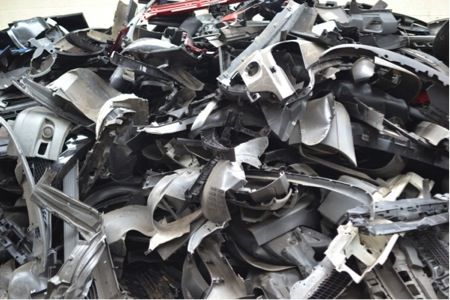Pitch
Reducing non-exhaust pollution from transportation is another step in vehicles sustainability.
Description
Summary
While there is a general concern about pollution coming from exhaust this is important to show importance of those coming from usage of tires, brakes along with manufacturing plastics used in cars.



What actions do you propose?
1. Everyday, way over 1 billion cars drive the roads all over the road, not less of the motorcycles or scooters, thus existing a tremendous amount of tires. Due to a friction, with every rotation tire loses some of its surface, emitting tiny particles, which end up as an element of air pollution or part of a dirt layer on the road. In both ways, tire dust, is either blown by wind or washed away by rain, ending its way in a natural ecosystems(f.e rivers near the roads), contaminating them. Also it gets to our lungs(causing heart and lung diseases, allergies). The problem comes from using petroleum based materials and heavy metals like zinc and lean. In order to make it clean, it's necessary to use sustainable materials. Instead of using coal and crude oil, manufacturers should depend on crops, that supply them with fats, oil and bioethanol. One, that might come to mind is hemp, since it is famous for its oil and fibers, which could also replace the conventional - rayon, that come from conifers. In the links below, the are shown examples of conventional tyre replacement.
http://www.bridgestone.com/responsibilities/environment/mission/future.html ~ The concept of non-pneumatic tyre, along with the ideas for sustaniblity.
http://www.caranddriver.com/features/how-oranges-end-up-in-your-tires-yokohama-db-super-e-spec
2. Similar situation is with brake pads. In category of materials, there are three kinds: metallic, organic and ceramic. The most popular is metallic, with its inexpensiveness, durability and effectivness, but with not place for sustainablity. Ceramic is expensive and usually applied in racing. Therefore necessary is to find organic version, that doesn't wear too quickly, isn't creating too much dust while braking, along with not being toxic for human lungs(brake pads created from asbestos turned out to create unhealthy dust).
3. As well as tires, conventional plastics need petroleum to be produced. Moreover they end up as nondegradable waste and so far recycling hasn't worked well enough(carbon fiber composites have the same flaws). Therefore this is important to find good substitute. Previously mentioned hemp might be useful again. Plastic made of its fibers has satisfying physical properties, is biodegradable and needs no petroleum during production. The are numerous examples of it in the automotive industry. Companies like BMW, Lotus use it in their cars(BMW I3 and Lotus Eco Elise) and now HempEarth is creating World's First Hemp Plane, where stronger and durable plastics play an important role. Also, an italian company called Kanesis, proved that this is possible to use it as fillament in the 3d printer. In addition, animal skin shouldn't be used to cover interiors, because further use of livestock increases the amount of emissions.
In order to change transportation, so it would have least effect on the climate change, these three issues have to be solved. Simply swaping for electric motors won't solve the problem.
This proposal doesn't give the exact solutions. It only raises awareness of the issues and give ideas to follow. Therefore one of the task coming from this proposal is to expand the knowledge of the issue, so to get new concepts. The problems mentioned in the summary will probably have to solved by funding a research that would find satisfying substitutes and would develop a cheaper way of manufacturing them. In time, some regulations, concerning the materials used in production, may also be initiate, but this would need a great deal of public interest.
Who will take these actions?
Researchers and engineers, producers. Involvement of students at universities is very desirable.
Where will these actions be taken?
Apart from work in labolatories, problem will be brought to the public by social media.
How much will emissions be reduced or sequestered vs. business as usual levels?
Depending on the application of new developed products. A busy road with 25,000 vehicles travelling on it each day will generate around nine kilograms of tyre dust per kilometre. It's easy to see, that new sustainable products will stop emission of tons of harmful dust.
What are other key benefits?
The most important are health benefits, in case of reducing break pad dust and tyre dust.
This proposal gives additional argument for existence of electric cars(regenerative breaking extend the life of break pads) and Hyperloop(no friction during tranportation causes no tyre dust).
Also fullfiling all three of the critieria will help people to minimalize their dependence from petroleum.
What are the proposal’s costs?
Cost will have to cover research funding, hard to estimate.
Time line
Related proposals
Proposal aims to recycle used tires. Even if goals included in my proposal succed, there will be a need to manage already existing waste.
References
http://www.bridgestone.com/responsibilities/environment/mission/future.html
http://business-ethics.com/2010/09/17/1640-exploring-green-alternatives-for-tires/
http://www.caranddriver.com/features/how-oranges-end-up-in-your-tires-yokohama-db-super-e-spec
http://www.abc.net.au/science/articles/2012/07/31/3554997.htm
